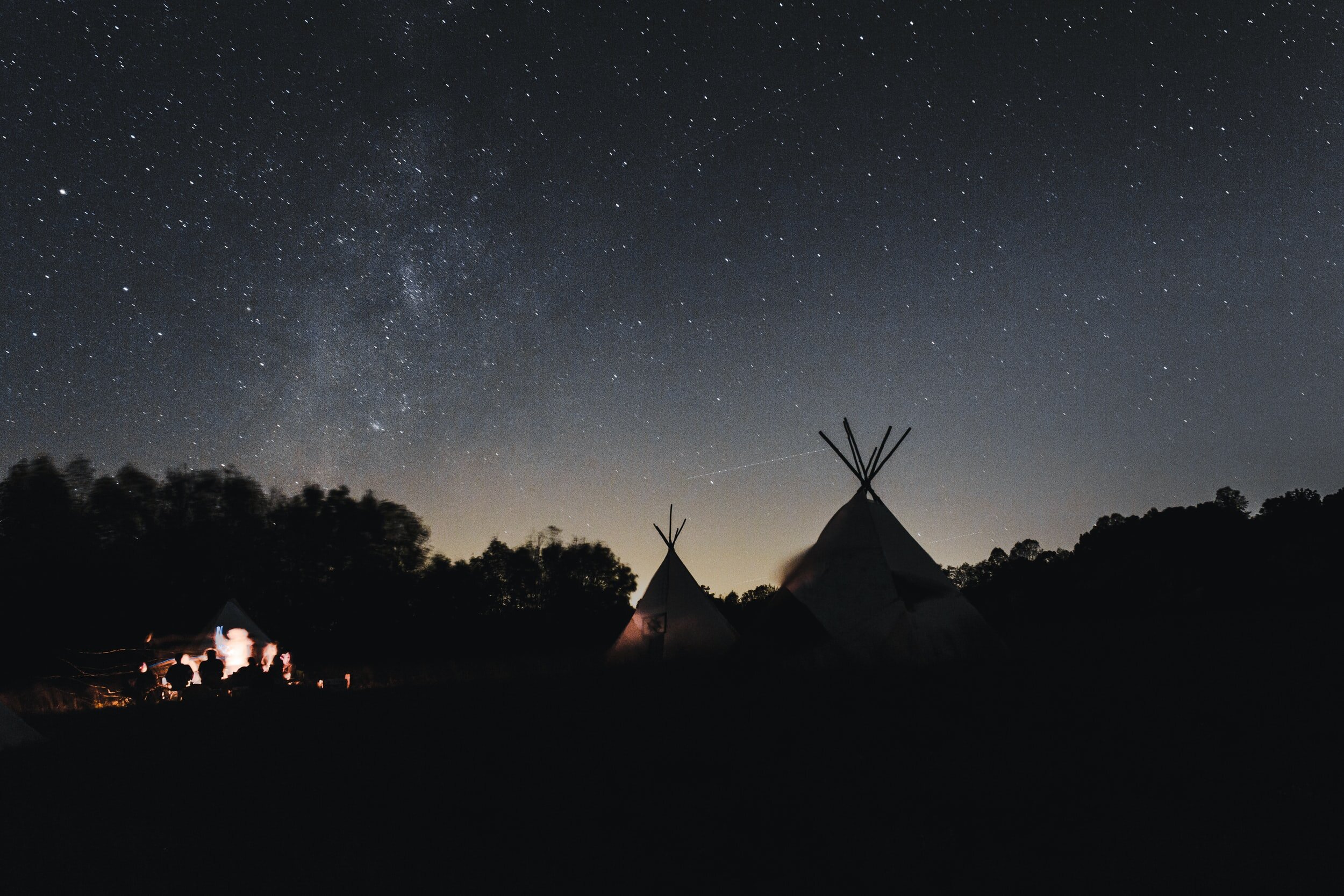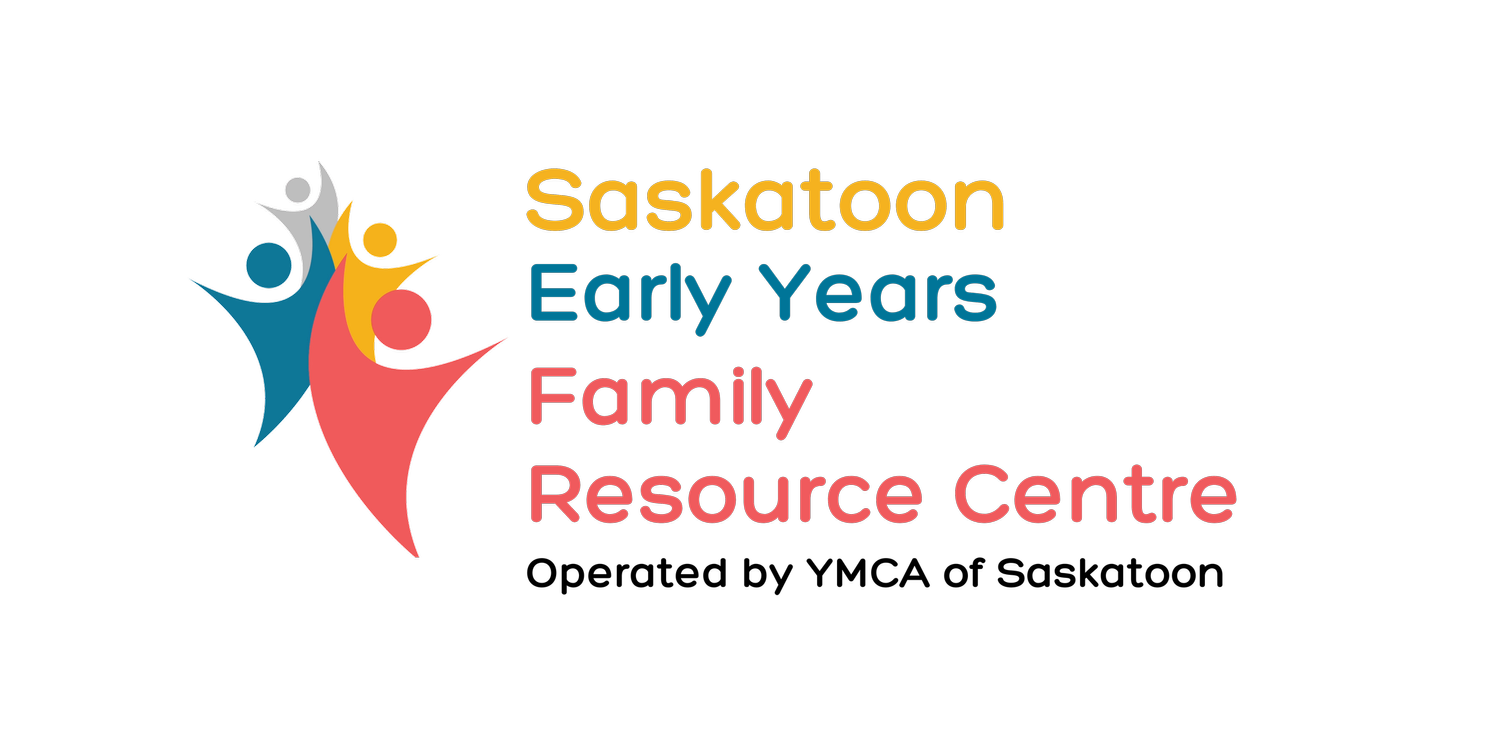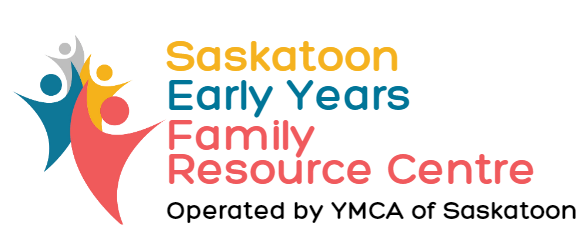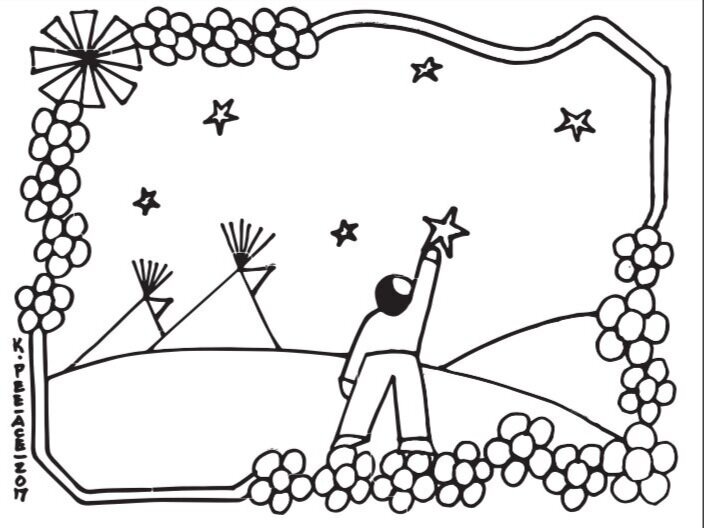




National Indigenous Peoples Day Resources
Below are resources found in or related to the contents of the family activity kits created for National Indigenous Peoples Day.
Activities to do as a family:
Tipi Craft
1. Download and print the tipi outline found here.
2. Use markers, stickers, crayons, or anything else you have to decorate your tipi however you would like.
3. Fold your tipi along the lines so it begins to form a structure.
4. (optional) If you have sticks, skewers, or toothpicks, you can tape them in the lines to represent the poles. See our writeup below to learn more about what each pole means.
5. Stand your tipi up and glue the ends together so it is secure.
When you think about the values that each tipi pole represents, what comes to mind for you and your family?
As a family, work together to fill out all of the bingo squares!
Medicine Wheel Activity
1. Draw a circle, then section the circle into four pie shaped pieces, or download and print the medicine wheel template here.
2. Colour in and label your medicine wheel as followed:
White - Spiritual
Black - Emotional
Red - Physical
Yellow - Mental
3. Take a look at our medicine wheel resources below. What else can you label each section with?
Think of things you can do as a family to be healthy spiritually, mentally, physically and emotionally. Write them on coloured paper strips that correspond with the segments of the medicine wheel, and creating interlocking loops of paper to make a chain. Hang your paper chain somewhere you will see it and be reminded of all the ways you can practice wellness as a family.
Turtle Island
A traditional oral story in some Indigenous cultures is that North America is floating on one big turtle's back.
In the Ojibwe oral tradition, there was one really large flood and it wiped out all of the animals that were living here on Earth. A loon, a muskrat and a turtle were the only animals who survived. Nanabush, a being who held the power to create life was also present and asked the animals to swim to the very bottom of the ocean and collect soil. Each animal tried their very best to bring soil to Nanabush. The muskrat was successful, but unfortunately lost his life. Nanabush took the wet soil from his hands and placed it on the turtle's back. This slowly created the land on which we live on today.
You can create your very own turtle rock using pointillism or dot art. To do this, use sticks, skewers, or cotton swabs as painting tools to create different sized dots on your rock. You can make any pattern you like on your turtle rock. You can paint a large round shape on one end of your rock to be the turtle's face. Your turtle rock can act as a reminder that we are connected to other's who live on this earth- people, animals and plants.
If you can’t find a rock to use, you can use this turtle outline here.
While you are making your turtle, think about things that make up your world. How many people are in your family? What kinds of activities do you like? Do you have any animals? Who are your neighbours? Have you experienced a culture different than your own before?
Resources to learn more & spark discussion:
Spirit Bear: Fishing for Knowledge, Catching Dreams by Cindy Blackstock
Read or print the PDF story here
Spirit Bears Guide to the Truth and Reconciliation Commission of Canada Calls to Action
https://fncaringsociety.com/sites/default/files/child_friendly_calls_to_action_web.pdf
Claire and her Grandfather, a story about a girl who is learning about her heritage.
Listen to it here, and follow along here
Colouring sheets from Treaty 6 Artist, Kevin Peeace
https://www.kevinpeeace.com/colouring-pages
Explore and learn about different first languages
https://www.firstvoices.com/kids/FV/sections/Data
Reconciliation & Social Justice Resources
https://fncaringsociety.com/shannens-dream-school-resources
Books celebrating Indigenous voices:
We Sang You Home by Richard Van Camp
My Heart Fills With Happiness by Monique Gray Smith
When We Were Alone by David A. Robertson
Kiss by Kiss by Richard Van Camp
Sweetest Kulu by Celina Kalluk
Stolen Words by Melanie Florence
Reconciliation beyond National Indigenous History Month
In 2009, June was declared National Indigenous History Month. in Canada. This provides an opportunity to recognize not only the historic contributions of Indigenous peoples to the development of Canada, but also the strength of present-day Indigenous communities. Every June, Canadians celebrate National Indigenous History Month, which is an opportunity to honour the heritage, contributions and cultures of First Nation, Inuit and Métis communities across Canada. Canadians are also invited to celebrate National Indigenous Peoples Day on June 21st each year.
While we are celebrating all Indigenous peoples of current-day Canada, it is important to recognize that the relationship between our first people and the Crown is ever-changing. One way we can continue to support our Indigenous friends across Canada, and stay involved year-round is by participating in Democracy.
Here are some tips, resources, and videos to help you talk to your little ones about civic-engagement from an early age!
Watch this short video to learn about the levels of Government in Canada
Check out this parent’s tips on engaging your kids in politics
Print out these kid-friendly postcards and write a letter to your MP, MLA, Premier, or Prime Minister. Unsure who your MLA is? Find out here.
Listen to the story to help kids understand Treaty relationships. This video is intended for younger children, and it is encouraged that as your child ages, you introduce age-appropriate discussions on how these relationships can benefit some Canadians more than others.
What is Orange Shirt Day?



















